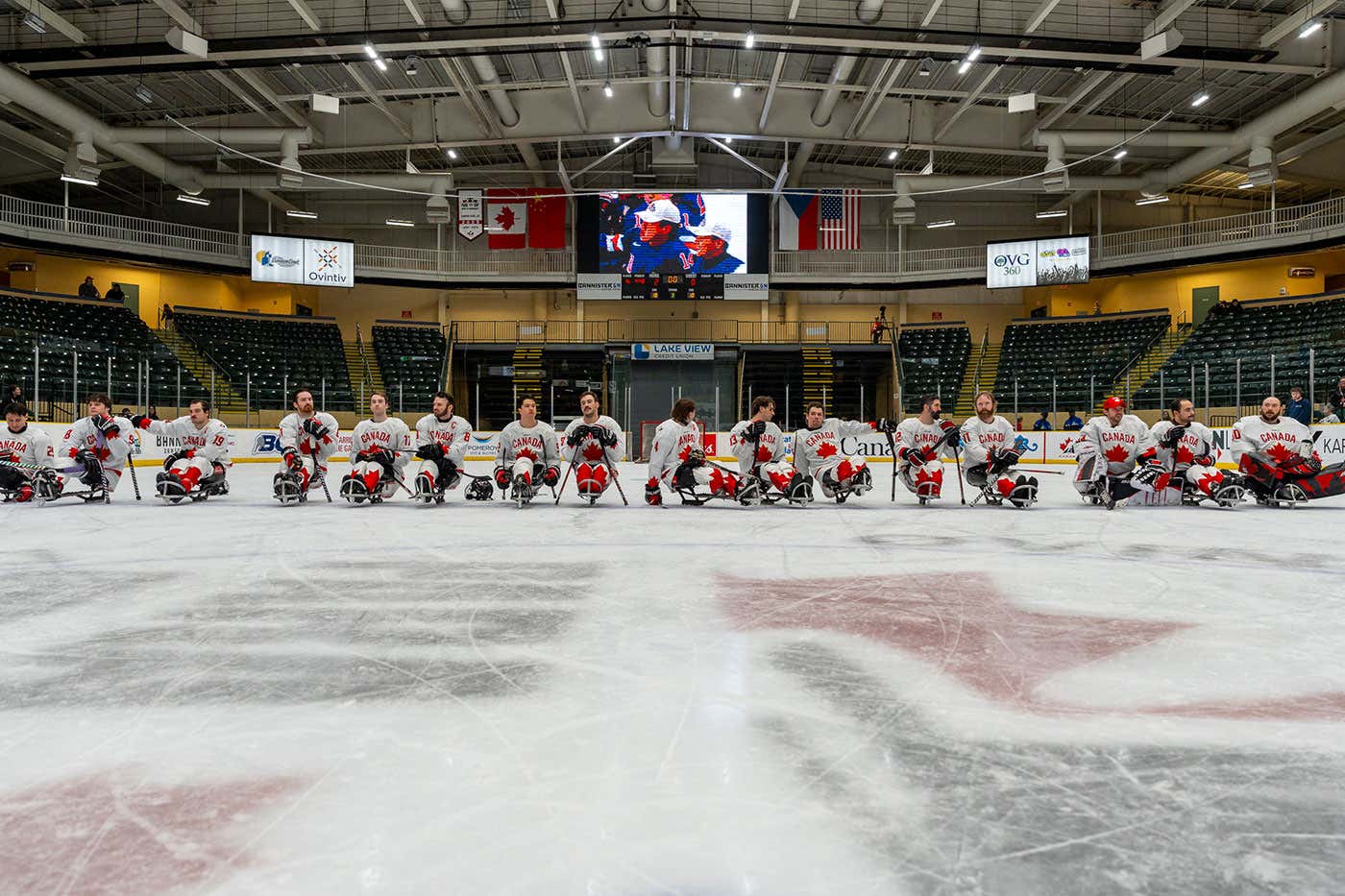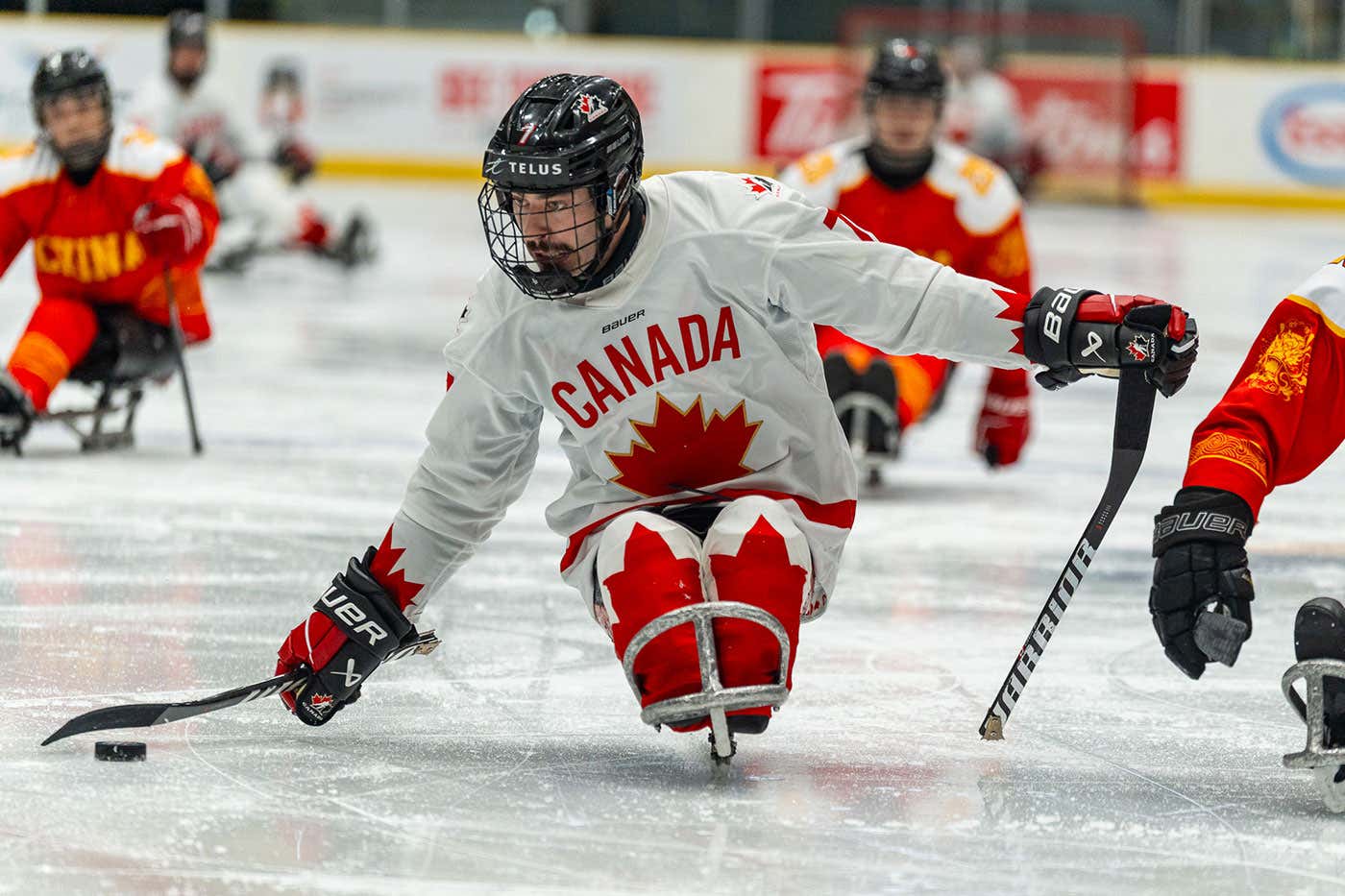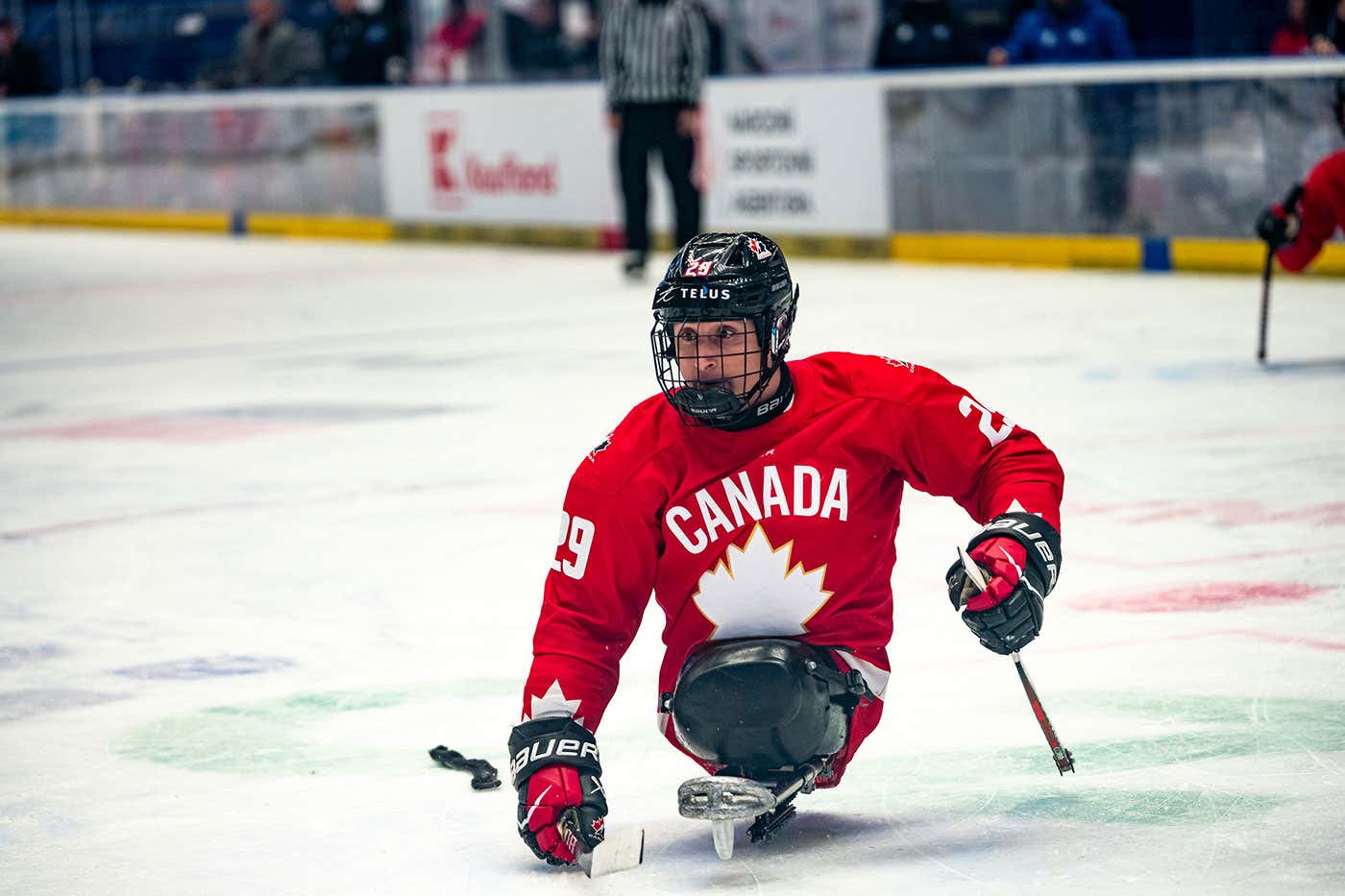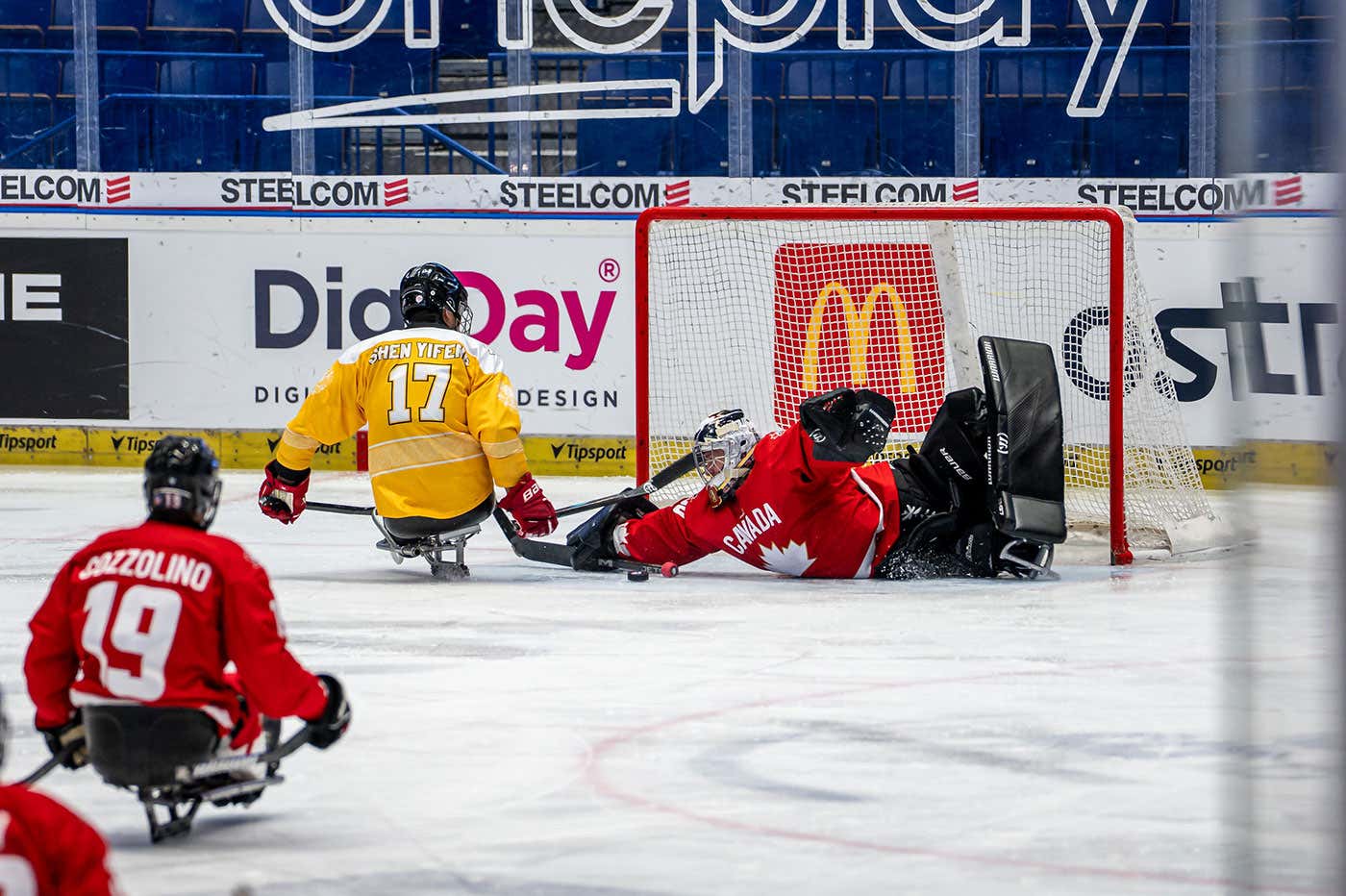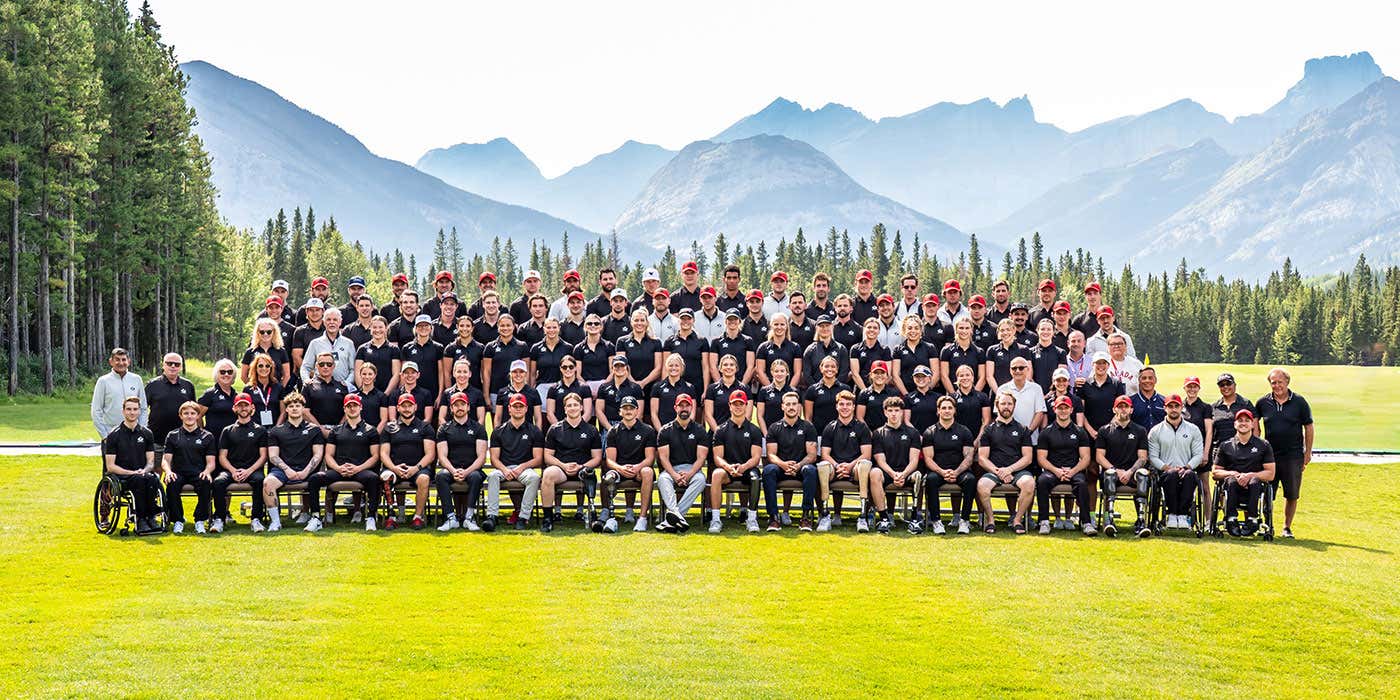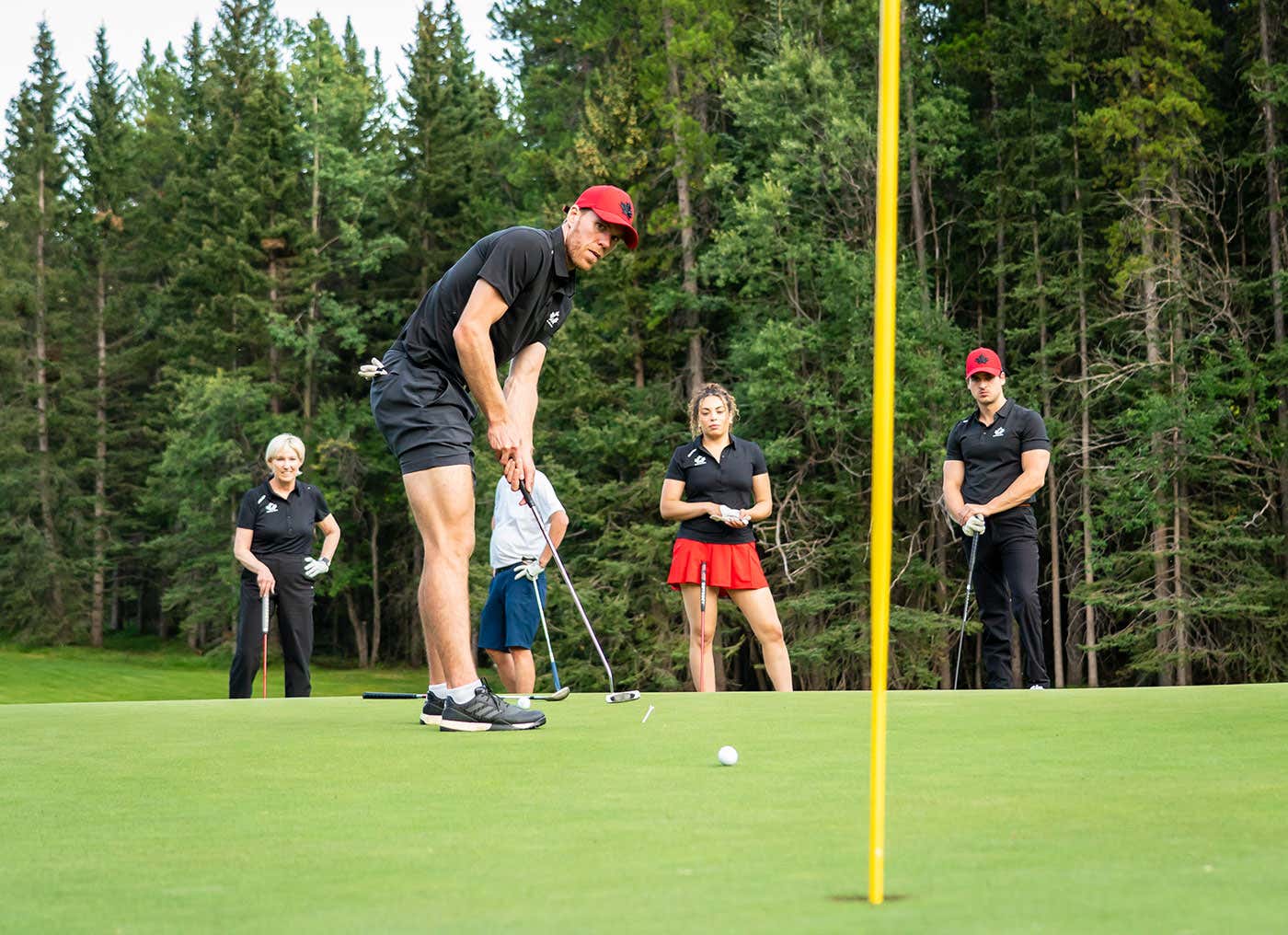Para Hockey Development

Para Hockey Facts
Overview
Para hockey is the Paralympic version of ice hockey and, since its debut on the Paralympic program in 1994 , it has become one of the biggest attractions for spectators at the Paralympic Winter Games. It is fast-paced, highly physical and played by athletes with a physical disability in the lower part of the body.
Competitors
Each team has six players on the ice, including the goaltender.
Rules
Para hockey is governed by the IPC (International Paralympic Committee) . It follows the rules of the International Ice Hockey Federation (IIHF) with a few modifications.
Athletes sit strapped into a metal frame that rests on two regular-sized skate blades. The sled is raised high enough to allow the puck to pass underneath. Athletes use two 75- cm- long hockey sticks, with picks on one end and blades on the other. The pick is used to propel the sled across the ice, and the slightly curved blade is used to handle the puck.
The goaltender may have an additional pick at the base end of his stick and may use an additional stick with a blade or a trapper glove with teeth.
Classification/ Eligibility
To participate in IPC competitions and sanctioned events (i.e. Paralympic Winter Games), athletes must have an impairment of permanent nature in the lower part of the body of such a degree that it is obvious and easily recognizable and makes ordinary skating – and consequently playing stand-up hockey – impossible.
Examples include amputation (leg, foot), paresis (loss of 10 muscle points in both legs), joint immobility, cerebral palsy and leg shortening of at least seven centimetres.
- <
- >


 HOCKEY CANADA
HOCKEY CANADA
